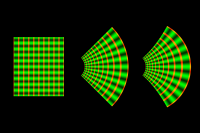
1800x1200, 300 KB
.
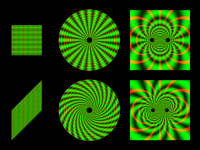
1500x1125, 834 KB
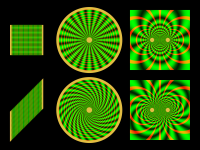
1500x1125, 867 KB
Conformal mapping is a mathematical transformation, which preserves all crossing angles between lines. Here it is used to map the simple current flow in a square to more complex geometries in the plane. Under such a conformal mapping the electrical resistance of the area is the same before and after the transformation. I thank Thomas Hörmann to explore the theory behind it!

grid distortion
1800x1200, 300 KB . |

conformal mapping
1500x1125, 834 KB 3000x2250, 2.6 MB |

conformal mapping with contacts
1500x1125, 867 KB 3000x2250, 2.7 MB
|
In the images below, the red lines show the equipotential lines whereas the green paths represent the current flow. In the square the left and right hand borders are attached to metallic contacts so that the current flows parallel to upper and lower border from one side to the other. Without a magnetic field, the current flows parallel to the electric field and perpendicular to the equipotential lines, whereas with a magnetic field perpendicular to the plane, the electric current flow is deflected by an angle θH (the Hall angle) with respect to the electric field direction. The anlge between equipotential lines and current is than 90°-θH. For some images below, a Hall angle of θH = 45° is chosen.
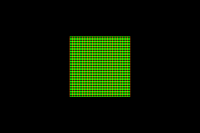
square 1500x1000, 38 KB |
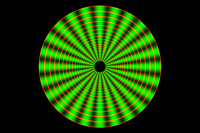
ring 1500x1000, 598 KB |
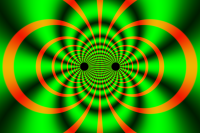
two circles 1500x1000, 800 KB |
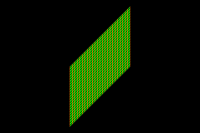
parallelogram, theta_H = 45° 1500x1000, 94 KB |
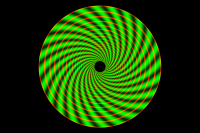
ring, theta_H = 45° 1500x1000, 633 KB |
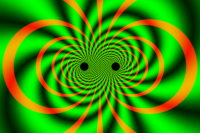
two circles, theta_H = 45° 1500x1000, 880 KB |
e-mail: Gerhard.Brunthaler(at)jku.at - replace (at) by @